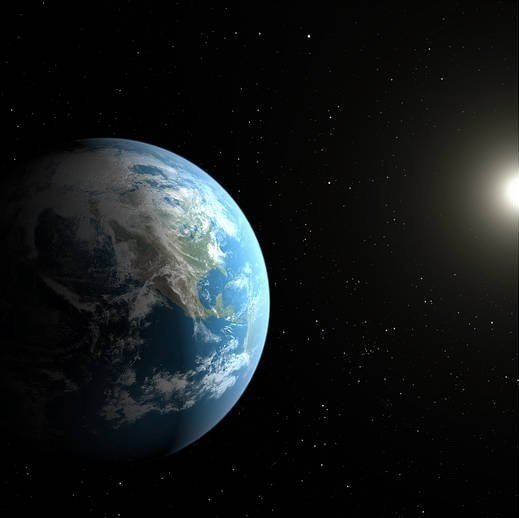
The earth spins around on its axis. Pretty much everyone understands that. And as it spins, we ride along, getting exposed to sunlight for half the time and darkness the other half. It is pretty interesting to see satellite images from their vantage point way up in space looking down at the surface testifying to that. You can actually see the dark side that is facing away from the sun and the light side facing toward it. And the rotation is fast.
The earth rotates on its axis at a speed of 1,000 miles per hour at the equator!
So even though you might think you’re not moving right now as you are sitting to read this, you are actually moving at great speed in relation to our solar system.

Now the earth’s rotation is critical to the survival of every living thing on the planet. You see, our sun radiates visible and invisible energy. Some of that energy is necessary to power all forms of life on earth, while other portions of that energy can harm life. Thankfully, our atmosphere protects us from much of the harmful solar rays. But the energy that is important to sustain life actually makes up a small part of light’s spectrum. And it is interesting that this useful energy is the portion of light that is visible to the human eye.
Visible light is necessary for the chemical reactions of life. It drives photosynthesis, which is the foundation of nearly every food web on earth.
But life cannot tolerate continual solar energy. Too much sunlight and the harmful radiation of gamma rays, x-rays, and other wavelengths can kill living tissue. Too little light and there is not enough to drive the required food production in plants and algae. We need a specific amount…kind of like baby bear’s porridge. It cannot be too hot or too cold, but just right.
Well, it turns out that the speed of the earth’s rotation is just perfect to create an ideal environment for life.

In fact, if the earth spun at 1/2 of its present rate, daylight hours and nighttime darkness would each be twice as long as they are now. That means during the excessively long days the plants would burn up from too much exposure. At night, the temperatures would drop so low that anything surviving the daylight hours would freeze.
So you can think of our planet as being on a rotisserie spit…like a chicken…slowly turning around and around as it is evenly heated.
What a perfect design to support life!


6 Comments
So-o-o when’s the chicken being served—LOLLove you, Mom
🙂
Great read Sherri!!God is amazing ❤
This is an extremely great tips particularly to those new to blogosphere, brief and accurate information…Thanks for sharing this one. A must read post.
The earth is slightly tilted, meaning that, say, the North Pole can still see the sun during the summer, while the South does during the winter.
Yes, that is correct!